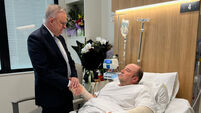Risky game of cat and mouse unfolds on live TV
Investigators are engaged in an extraordinary effort to communicate via live television with a killer whose face and name they don’t know.
But he knows them. He’s watching every day on television, investigators believe. It’s like playing poker with an executioner who is standing behind a one-way mirror.














